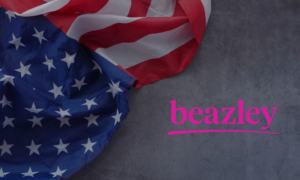By Tara Kelly, SPLICE Software CEO and President
The only year that beats 2020 in terms of losses is 2017, with three major hurricanes recorded impacting the U.S. mainland and territories. Three of the costliest wildfires in U.S. history occurred in the last five years.
Climate-driven catastrophes caused by extreme temperatures and droughts, like the deep freeze Texas experienced this year, seem to be increasing. But the random distribution of these catastrophes from one year to the next demonstrates how hard they can be to predict, even by experts.
We don’t know what the rest of 2021 will bring, but the hard freeze in Texas has already been estimated to cost a record $90 billion — and that’s just one single event. Unfortunately, we’re learning that most of those losses could have been avoided, according to Enki Research disaster modeler Chuck Watson, who says that about 90% of the damage could have been averted with preventive actions.
The situation in Texas should be a wake-up call for carriers. While we don’t often know what tomorrow holds, proactive communication with policyholders is just one way carriers can ensure preventive measures are in place to prevent losses, improve the customer experience, and — most importantly — save lives. Here are three tips that carriers can use to prepare policyholders for catastrophic events:
- Reach out early to confirm basic information and preferences: To lay the groundwork for successful catastrophe communication, contact policyholders early and often to make sure you have up-to-date information, including whether a residence is a primary or secondary home. Make sure your list of mobile numbers, email addresses and preferred communication channels is current and ask for customer opt-in for ongoing digital communication.
Make the outreach relevant to customers by offering something of value in exchange, including information on how to stay safe and protect their property. Tailor the information you provide to the customers’ risk exposure, i.e., tips on wildfire mitigation for people in vulnerable areas, including coverage for flame-retardant sprays to protect homes or safe storage tips.
- Communicate when a catastrophe is imminent: If a storm or other natural disaster threatens, let policyholders know you’re there to provide continuity and comfort. Direct them to trusted sources of information about potential weather events or other types of disasters like floods or fires in their area so they can stay up-to-date.
Offer tips on how to document property and possessions for claims and give policyholders an overview of how you’ll respond to help them, including how to reach out to file claims, reminders about coverage amounts, anticipated wait times, temporary structure availability and preferred vendors. People who are dealing with uncertainty need reassurance and you are in a position to help communicate valuable information.
- Plan your post-catastrophe communication: Once the physical danger is past, policyholders will be focused on recovery, so post-catastrophe communication will be critical. Create a process to reach out to affected policyholders with updates on claims status and be sure to have an electronic payment option in place since they may be displaced from their usual address.
Be ready to provide information on temporary facilities located in their area, adjuster availability and any community outreach your company is engaged in to help affected populations. Fine tune your process for notifying policyholders when payments are made so they can access needed funds as soon as possible. Consider connecting them with various government resources that could provide additional assistance.
Research Report: Reimagining marketing and distribution in a post-pandemic world.
The catastrophe in Texas wasn’t foreseeable in every detail, but the power grid in the state had failed before, and investment in proactive steps could have greatly mitigated 2021 losses. Now is an excellent time for carriers to plan ahead and take any needed steps to prepare themselves, their processes, and their policyholders for catastrophic events. It starts with opening communication channels, and automated messaging can be ideal in this scenario.
A proactive approach where the carrier is prepared with updated contact information and the policyholder opts-in to receive automated messages that deliver value is an investment. With the right approach, not only can the carrier help policyholders stay safe and avoid property losses, but insurers can also develop a stronger relationship with customers in an increasingly competitive sector.
Tara Kelly is the President, CEO and founder of SPLICE Software, with offices in Calgary, Alberta and Chicago, Illinois. SPLICE Software serves insurance carriers, retailers and other enterprise companies through intuitive software platforms that enhance customer experience and enable better operations delivery. Learn more about SPLICE’s solutions here.








